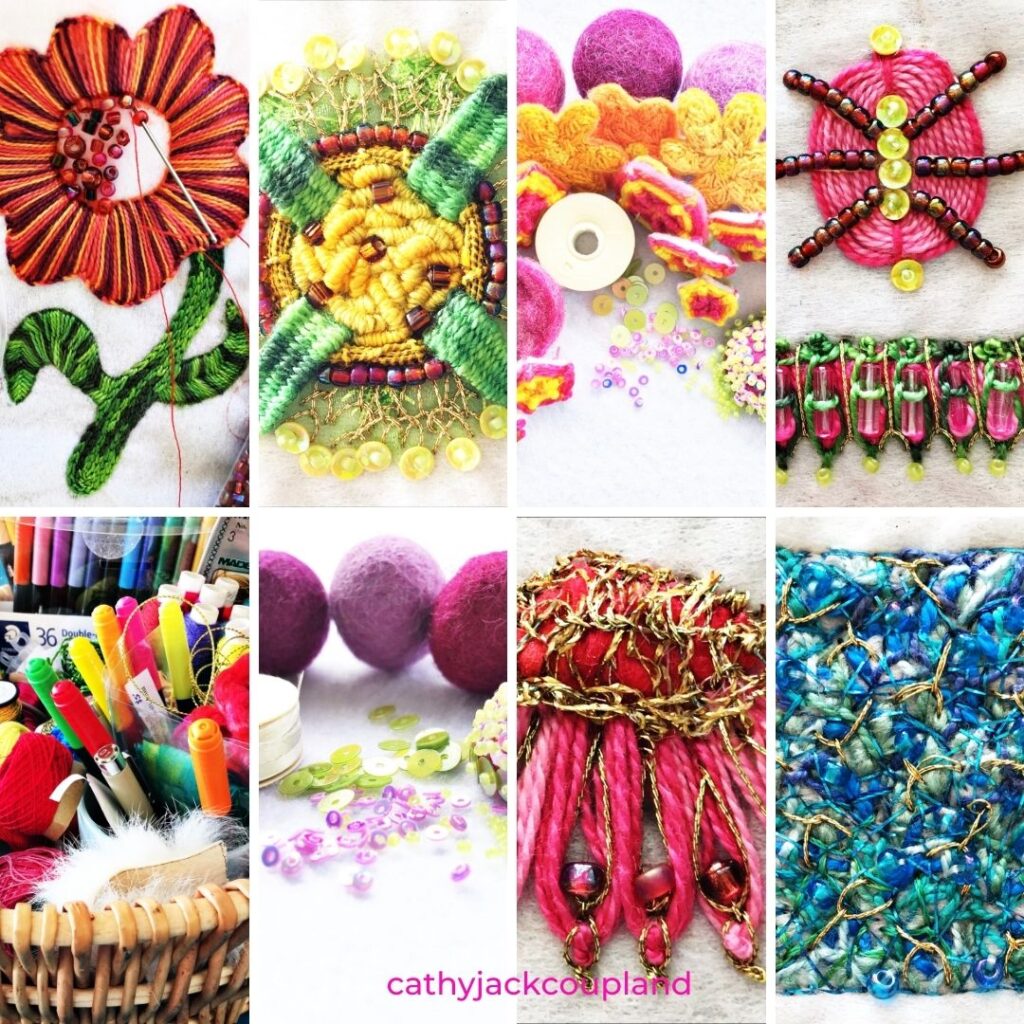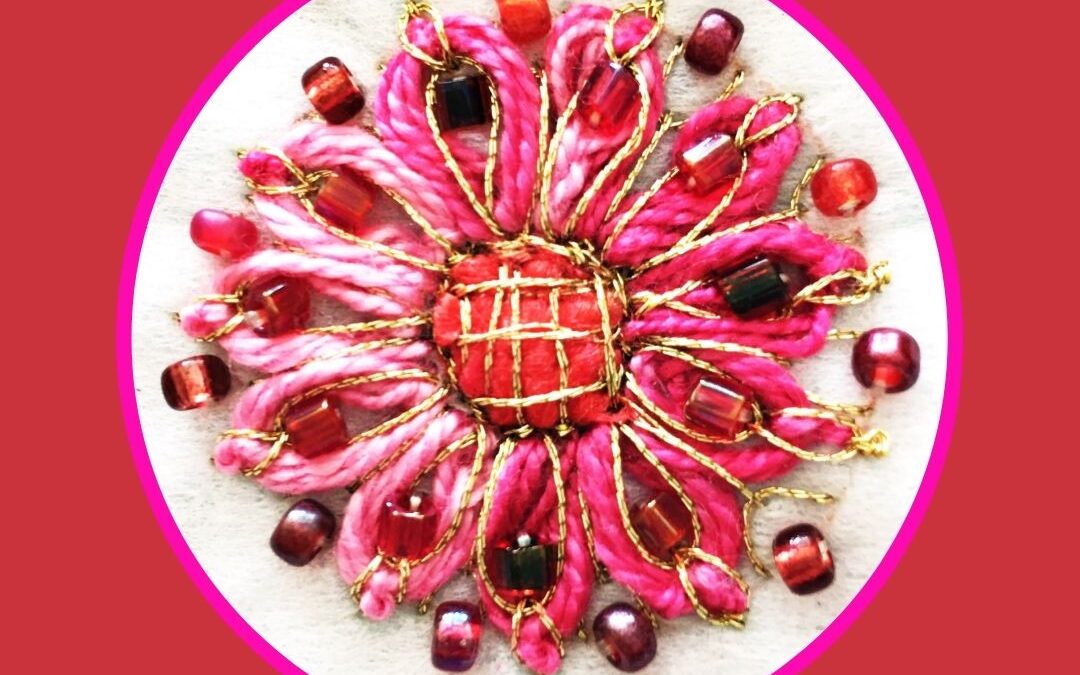Recently, I picked up a needle and thread to embroider. Yes, hand embroidery – something I haven’t worked at in years.
Weeks down the track, I can honestly say that I’ve worked a stint of hand stitch into my daily routine.
Why? Because I can feel it doing me good.

Sewing, stitch, embroidery or needlework ticks so many creative and therapeutic boxes – really it should be a ‘lay down mazaire’ – that’s Aussie slang for a great outcome, as a means of slowing down and being meditative whilst also being creative.
The art of the needle is international, dating back thousands of years. It’s significantly cultural, familial, traditional and historic. It’s also contemporary, artistic, fashionable and offers textile-based employment, to a huge percentage of workers worldwide.
Plus hand embroidery is highly transportable and can be fairly inexpensive. That pendulum can however swing in the opposite direction with the seductive power of exquisite hand-dyed threads and lavish fabrics now available.
But it’s also a great way to repurpose fabrics and clothing, helping the environment, and with the ability to maintain fond memories of loved ones through narrative embroidery, recycling a favourite item of clothing in the work.
Embroidery can also encompass a form of protest or social messaging, gathering groups of people together with similar cultural backgrounds, holding on to old traditions – or forming new ones, and is a great way of transferring stitch and pattern knowledge from generation to generation.
And sadly, I have to wonder how many of these wonderful traditions and knowledge is being lost each year? Fortunately, the fashion runway is the saviour and friend-in-need to the art of embroidery – as it has ever been, but it can’t save it all.
So I urge the picking up of a simple needle and thread and beginning to work stitches on a couple of layers of fabric. What I love, is to build onto just one stitch, by layering other stitches and embellishments empathetically within those worked stitches. Eventually, I’ll put up a series on my YouTube channel to help inspire.
There’s a superabundance of books available for self-learning, or if instant gratification’s your thing (it is mine), then jump onto YouTube. There are some very good embroidery videos available. Just grab a coffee and scroll through until you find what you’re after.
Online workshops and face-to-face teaching are other avenues to learn, and this is where word of mouth should play an important role. If you’re interested in learning to embroider, ask friends where they learnt, or look for online reviews – because, at the end of the day, good teaching comes down to a good teacher. Look for enthusiasm, encouragement and defined outcomes in their teaching styles.
Another means of inspiration to stitch could be simple research. If you’re like me and just love history, look into the myriad styles of embroidery used throughout history in various cultures – their migration across the world, and how they were used. Begin a stitch sampler – it doesn’t have to be perfect – that was never the intention for samplers until they were being framed and shown. They were simply an aid-de-memoir to note down ideas, stitches and stitch patterns.
And let’s not forget the purely artistic side of embroidery – look to design your own work – and that’s where everything should begin to come together. Your taste and style, your stitch vocabulary, your colour palette, your concepts – your work should become a reflection of you.
For me, it’s going back to the basics that compels me to want to pick up a needle and thread or to want to sit at my machine for hours on end. And it’s the simple things like line, shape, colour and texture.
When those simple elements begin to fuse and the excitement and enjoyments levels rise, relaxation sets in and, quite frankly, I just don’t want to stop. It’s something I never tire of.
And my two top tips:
- whether you’re working by hand or machine, if you’re after excitement in your work – look to incorporating disparity and variety through the use of contrast – of size, shape, colour, texture, value, number, placement, lustre and direction. Sample and enjoy adding to your stitch vocabulary.
- prepare a sewing basket or box – something that’s easily moved, and fill it with containers for specific threads, scissors, needles, embellishments, and markers. Having everything easily at hand opens the opportunities to stitch – especially if you can find a warm, sunny nook.
Let’s all become champions and protectors of this precious gift we have – the ebullient legacy of the art of the needle.


